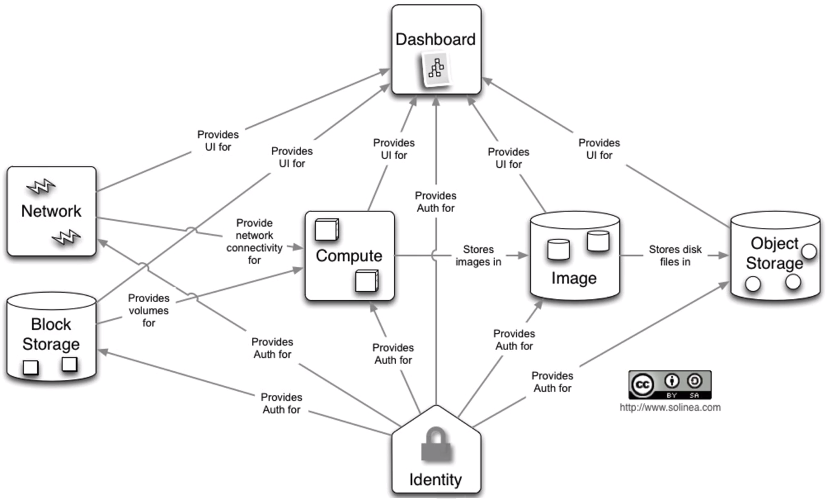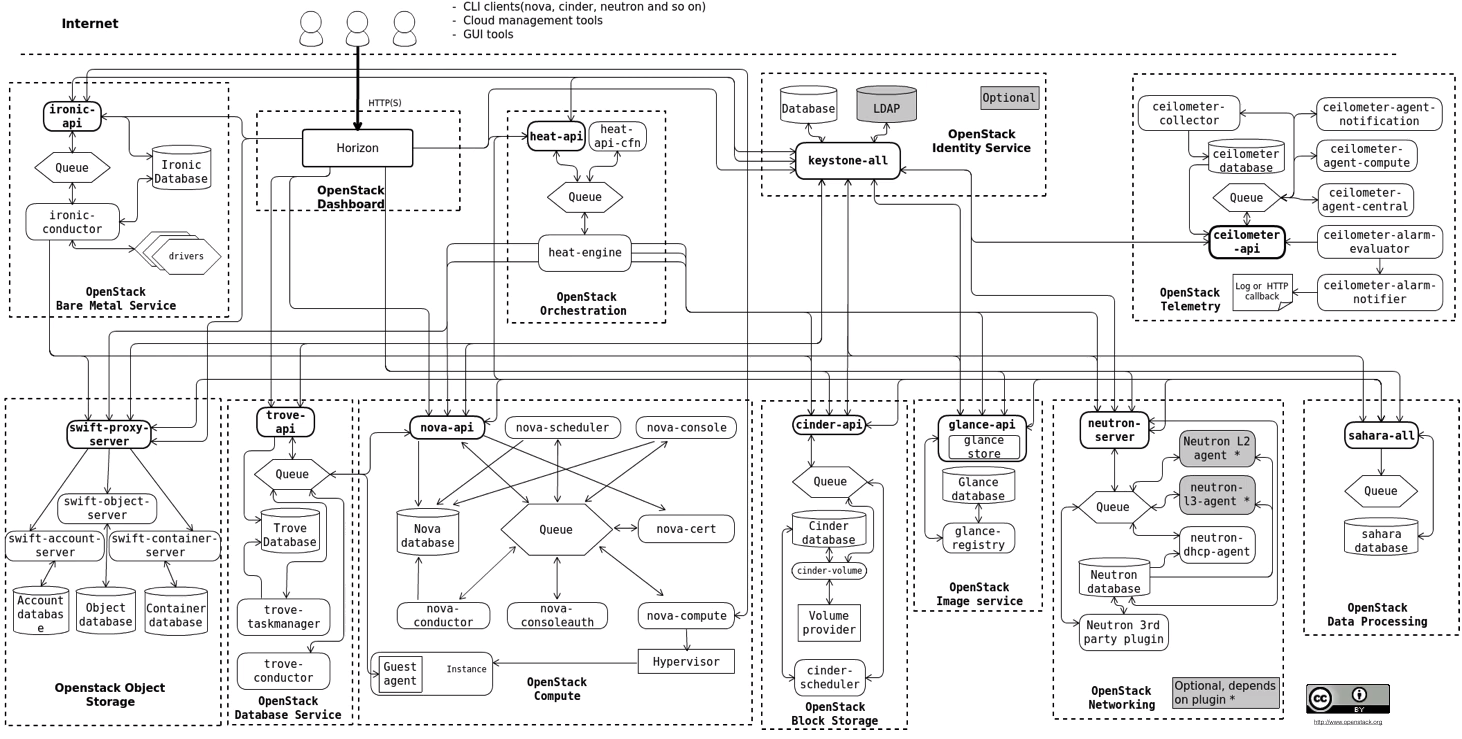Section 1: Introduction
1. Why you should learn OpenStack
2. About the course
Section 2: Cloud Computing Overview
3. Intro to Cloud Computing
4. Cloud Enabling Technologies & Comparison with Traditional IT
5. Cloud Computing – Delivery and Deployment Types
Quiz
Section 3: Intro to OpenStack
6. Introduction
7. Overview of Component Services
Core Technologies
- Keystone: Identity
- Glance: Image Management
- Stores and retrieve VM images
- Neutron: Virtual Network
- Nova: Compute
- Launching, Migrating, Pausing, Resizing, etc.
- Cinder: Block Storage (Cinder block, get it?)
- Used to keep persistent data on ephemeral VMs
- If the VM is destroyed, the data can be saved
- Can be attached to another VM later
- One to One, not Shared!
- Only 1 VM can use at a time
- Use “Manilla” for shared storage
- Used to keep persistent data on ephemeral VMs
- Swift: Object Storage
- File Storage
- Uses HTTP API (GET, PUT)
- Horizon: Dashboard
- Web based management
8. Architecture
Section 4: Openstack Installation
9. Before Installation
RDO (Community supported OpenStack)
- Runs on RHEL, CentOS, Fedora (YUM based?)
- Class uses CentOS
Requirements
- Clean OS install
- Min 16GB RAM (But LAB can use 4 – 6 and should be OK)
- 20GB HDD
- 64bit x86 with Hardware Virtualization enabled in BIOS
10. CentOS Install on VirtualBox
https://www.udemy.com/course/openstack/learn/lecture/6906130#overview
- CentOS 7.2 Minimal
11. Openstack Installation
https://www.udemy.com/course/openstack/learn/lecture/6729018#overview
12: Verification
Get Admin Password
more keystonerc_admin # admin / ca5a4fd44de44ebc
Verify
http://IP.AD.RE.SS

